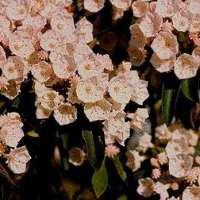Everyone enjoys the beauty of flowers in yards, parks, and community gardens, and the flowers provide a food source for pollinators. Even small outdoor spaces can provide habitats for pollinators and help us fight climate change. A pollinator garden can range from a decorative planter with native flowers on your front step to a larger garden. Native plants are also part of nature’s climate toolkit because they soak up excess carbon dioxide.
Gardening connects us to nature and helps us better understand how nature works.
Why choose native plants for your garden?
Pollination is the process of moving pollen from one flower to another of the same species to produce seeds. Almost all flowering plants need to be pollinated to make new plants. Some plants are pollinated by wind or water, and some pollinate themselves. However, most flowering plants depend on bees, butterflies, birds, flies, and other animals for pollination.
Over the years pollinators have developed alongside native plants, and native plants are well adapted to the local growing season, climate, and soils. Many pollinators feed on specific plants because they prefer certain types of flowers. For example, hummingbirds drink nectar from long, tubular flowers such as honeysuckle while bees may prefer more open flowers such as asters. Native plants are also important for providing food for butterfly and moth caterpillars. The black swallowtail butterfly caterpillars prefer to eat plants in the carrot family (dill, parsley, Queen Anne’s lace) while monarch butterfly caterpillars need milkweed to grow into beautiful butterflies.
Pollinators are essential for maintaining healthy ecosystems and our food web. Plants need them for reproduction, and we need pollinators to help plants make the food we enjoy.
Pollinators need our help.
Several butterfly and bee species have disappeared or declined in their ranges. Loss of habitat and pesticide use is causing many of these issues. We can help pollinators by creating pollinator-friendly gardens and creating a favorable habitat for them.
When planning your native plant garden include plants that provide pollen, nectar, and seeds. Remember to offer areas for butterflies and other insects to lay eggs and places for native bees to nest such as bare sand, bare soil, and deadwood.
Keep your outdoor areas free of pesticides, insecticides, and herbicides.
Choose native plants that will bloom in the spring, summer, and fall (see below), and choose a variety of native plants that attract different types of pollinators.




